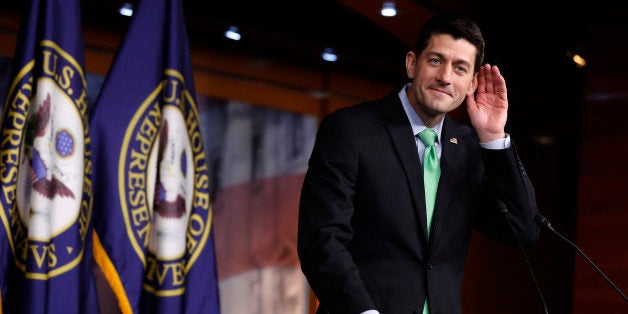
What "soccer moms" were to the presidential campaign of 1996, "white working-class" voters are to the 2016 campaign. Donald Trump's appeal to these voters, so the story-line goes, enabled him to hijack the Republican Party's nomination. These same voters helped fuel Bernie Sanders' unlikely run for the Democratic nomination. Never mind the ideological paradoxes.
The hunt for the white working-class has raised anew two related questions: can Democrats win back those white voters, or can they win elections without them. The Two Nates (Cohn and Silver) have been engaged in a statistical duel over this recently. Cohn has crunched numbers suggesting that Trump has a path to victory because white voters were under-counted in 2012, while Silver believes Trump has not increased his share of those voters enough to overcome his other (many) deficits.
Both versions of this question start with the same premise: since the 1960s, the Democratic Party has turned its back on the white working class and their economic interests as it chases Wall Street bankers or Hollywood moguls or Silicon Valley entrepreneurs. Ronald Reagan summarized this perception of the party's history in 1962 when he became a Republican, announcing, "I didn't leave the Democratic Party, the party left me."
Reagan positioned himself as emblematic of a generation. The New Deal Democrat became a Goldwater Republican because the Democrats no longer cared about the white working-class, and 18 years later Reagan would win the White House on the strength of white voters who had become disenchanted with the Democratic Party. That's why we called them "Reagan Democrats."
Of course, it takes two to get divorced, and so rather than blaming the split entirely on the Democratic Party's economic betrayal, let's examine more deeply what caused those white working-class voters to walk away from the marriage.
The image is iconic. July 2, 1964 in the Oval Office, President Lyndon Johnson signed the Civil Rights Act, and Martin Luther King, Jr. is standing directly behind him. A triumphant moment for the president and the nation. But, as Bill Moyers would later recall, LBJ also quipped, "I think we just delivered the South to the Republican Party for a long time to come." Years before the GOP had its "Southern Strategy," Johnson knew that a commitment to African American civil rights would drive away white Southern voters. And plenty in the North too.
He'd seen it happen before. In 1948 the Democrats included a civil rights plank in the party's platform, and enraged Southerners walked out and formed their own party. The Dixiecrats nominated Strom Thurmond to run for president and he won four Southern states that year, largely because of voters from the white working-class.
Across the 1960s a series of Supreme Court decisions reinforced the wall of separation between church and state and the Democratic Party grew to be the defender of secular pluralism. In response, tens of thousands of Christian fundamentalists, who had never had much interest in electoral politics, mobilized for the Republican Party, which increasingly adapted its message to the fundamentalists. Those fundamentalists were white too.
In the 1970s, fundamentalists and numbers of Catholics found a common enemy in feminism and in particular reproductive freedom. Like civil rights, at least part of the feminist agenda was adopted by the Democratic Party, driving away some number of Catholic voters who decided that birth control and abortion would be their single issue.
Fast forward to 2010 and the Oval Office again. On March 22 President Obama signed the Affordable Care Act. Nancy Pelosi -- the person who really delivered the bill, dragging reluctant Congressmen by their ears to vote for it -- stood directly behind him. The most powerful woman in American political history and the first African American president. Think of the optics of that moment for certain white voters. And indeed, white voters punished the Democratic Party in the mid-term elections six months later.
Whatever complaints one might have about the economic policies favored by Democrats over the last 50 years, no one outside the American Enterprise Institute and Paul Ryan's office seriously believes that Republican economics have been better for the white working-class. Therefore, the fact that they vote disproportionately for Republicans suggests that they are making their choice for reasons beyond their wallets.
So let me reframe the question with which I began. If the Democratic Party wants to take back white working-class voters from the GOP, which of its commitments should it give up to lure them?
Steven Conn is the W. E. Smith Professor of History at Miami University in Oxford, Ohio.